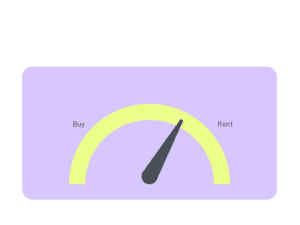Did You Like the Post? Share it:

Whether you’re just starting a rental business or running a growing rental company, the question of adding more inventory is an important decision. When you need an equipment rental inventory, you should know how to keep track of equipment inventory.
In rental businesses, equipment inventory management is an essential function. If your business lacks the tools to monitor your equipment and its revenue-generating performance, it may take quite a while to understand that the expenses of equipment losses and operational inefficiencies are costing your business big bucks.
Better equipment inventory tracking may get rid of these inefficiencies, cut down on losses, and increase the lifespan of each piece of equipment used by your rental business.
Related For You: Benefits of GPS tracker for rental equipment
This article will highlight 5 tips that will assist to track an equipment rental inventory effectively.
Though it is undoubtedly true that an electronic asset tracking system is an excellent tool, you need to ensure an optimized inventory management system.
But more than just technology is needed for a tracking program to be effective. The following 5 tips are what we believe your business should take to enhance all facets of rental equipment tracking, both with and without an automated system.
According to market research,
“Due to fewer operations during the coronavirus pandemic, the equipment rental market size in the United States had a significant decline in 2020. However, it recovered in 2021, increasing by three percent to 47.8 billion dollars, recovering from the blow. It is predicted that the rental market will exceed the peak level recorded in 2019.”
You should first carry out a top-to-bottom audit of everything your rental organization already holds before you make any changes to your inventory monitoring procedure.
In any business sector, especially those utilizing cutting-edge, networked IoT technologies, an audit is an essential first step. A single malicious IoT device could be the entry point a hacker needs to infiltrate your company’s network.
Starting with a thorough audit of your rental inventory will make any process changes to make afterward more effective. You should keep track of all the following in your equipment rental inventory:
The following step is to create a trustworthy inventory and create a review plan before creating equipment rental terms and policies. Be open and honest about this process.
Define and document your key rental equipment management best practices. Your best practices must account for processes for both normal operations and emergency situations.
Additionally, you must outline all inventory management methods. You should track your equipment “from the cradle to the grave,” (or from purchase to asset retirement).
You should set up processes for ordering and receiving equipment. Any new equipment that enters your company must be registered and identified in your management system. Laptops, cellphones, and tablets must be pre-installed with the security software used by your business.
You should also establish a process for how your employees should report missing, stolen, or damaged equipment. Rental equipment loss can drastically deplete your finances for purchasing equipment if it is not properly handled.
Regulations from various industries, such as those in the healthcare or energy sectors, frequently require loss tracking.
In order for employees to easily access any loss reporting forms they may require, link them to your policy document. Keep an eye out for interesting tendencies in your tracking data.
If you are looking at maintenance records and you observe that the three portable scanner models represent three-quarters of all maintenance requests. Then, you might remove that model when you update your inventory in the future.
You need to keep track of the warranties and maintenance schedules for your equipment rental inventory. By making sure that you follow all maintenance schedules, you may increase the lifespan of your rental equipment.
An automated rental equipment tracking system can be used to keep track of your warranties. You may set up the system to notify you when they are ready to expire.
In order to avoid sign-outs, you can also tell the tracking system to shut down devices for essential equipment.
To automate all the tedious work associated with managing rental equipment, you need to think about utilizing an automated asset-tracking system. To regulate who is permitted to check out stored equipment, these systems can use a variety of access control methods.
Spend some time choosing a tag type that meets your administration and security demands while also being cost-effective.
The following are the two most common tag types:
Long-term success depends on having a sound plan as well as tactics for managing your rental inventory. You can monitor your assets and keep all of your items current, including their notes and statuses, by maintaining a clean rental management system.
Moreover, it wouldn’t take long to record this if something were to happen to your equipment. It won’t take long for you to fix any problems and get your items back on track.
If you want to get all of these, you can undoubtedly go for RentMy which will offer effective inventory tracking. So, you can easily apply these exclusive tips by embracing the RentMy – Equipment Rental Management System.

In the dynamic landscape of retail and consumer preferences, businesses must constantly innovate to stay ahead. One strategy gaining popularity is the integration of rental
Ready to bring Enterprise-scale equipment rental management? Learn how RentMy has delivered Enterprise Equipment Rental Inventory Solutions since 2008. Pick the trusted solution to offer equipment rentals on your terms and compliant with your processes.

Online booking, delivery, packages and everything else you need to manage and grow your rental company
Congratulations!
Check Your Email (Including your Spam Folder) to Activate Your Account